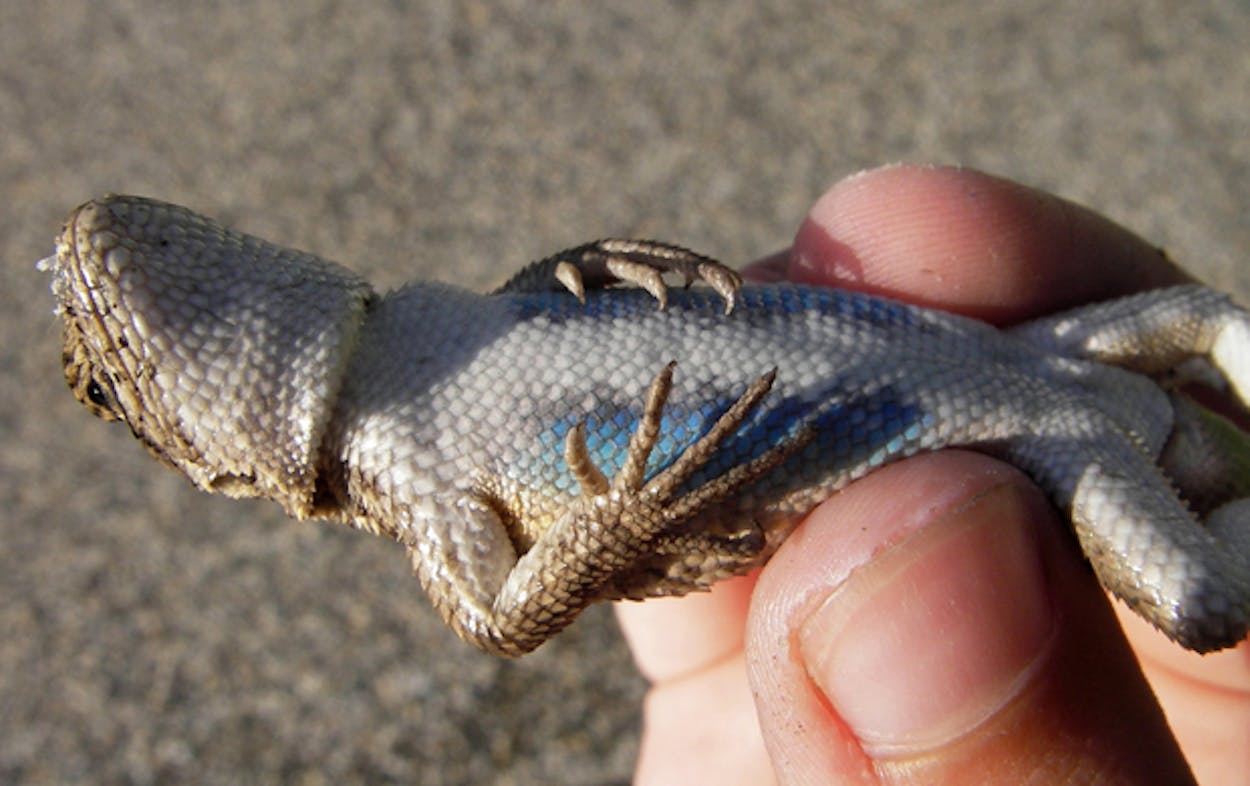The U.S. Fish and Wildlife Service has delayed its decision on whether to add the dunes sagebrush lizard to the endangered species list. A ruling had been expected by December 15 on the controversial issue, which has pitted environmentalists against oil industry heavyweights, but agency officials postponed the decision until next year, saying they needed more time to conduct further research on the lizard’s natural habitat.
The lizard, which is “about the size of a human hand,” is found in only eight counties—four in southeastern New Mexico and four in West Texas, according to the Las Cruces Sun-News. The small reptile’s habitat overlaps with the oil-rich Permian basin. Lizard advocates worry that ranching and drilling operations are encroaching on the reptile’s natural environment and could cause the scaly beast to go belly up. But the oil industry fears that oil production could be severely curbed if the lizard is named an endangered species.
Texas Republicans applauded news that a decision on the lizard’s status had been delayed. “It’s reptile dysfunction delayed,” Texas Land Commissioner Jerry Patterson quipped to the Fort Worth Star-Telegram’s Anna Tinsley. “I do thank them for the delay. Maybe they are listening and realize there’s not enough evidence.” At the Houston Chronicle‘s Texas on the Potomac blog, Kyle Glazier reported that Senator John Cornyn, also praised the delay. “It’s essential that the job creators who will be directly impacted have the opportunity to have their concerns heard before this potentially devastating listing goes forward,” Cornyn said. Congressman Michael Conaway—who represents Odessa, Midland, and San Angelo—held the lizard is nowhere near as rare as the feds have claimed.
The Midland Reporter-Telegram‘s editorial board weighed in on Monday, pushing for the additional 45-day comment period to be put to productive use to conduct more research on the issue. “We remain convinced that the science for listing the lizard as endangered is faulty and should not become the burden of the oil and gas industry,” the board wrote. Adding the lizard to the endangered species list could “considerably slow future drilling” in and around Andrews County, the board held, having a dire economic impact on the area.
Reptile Channel chimed in with some background on the U.S. Fish and Wildlife Service’s position:
The USFWS says that the lizard is in danger of extinction due to threats of habitat loss and habitat fragmentation. The threats include oil and gas activities, which is a major source of revenue and jobs for the affected area, the use of herbicides, the loss of Shinnery Oak, a low growing shrub in which the dunes sagebrush lizard seeks refuge, and the building of roads, pipelines and power lines to support oil and gas development.
The U.S. Fish and Wildlife Service has extended the period for public comment on the issue until January 18, 2012.







